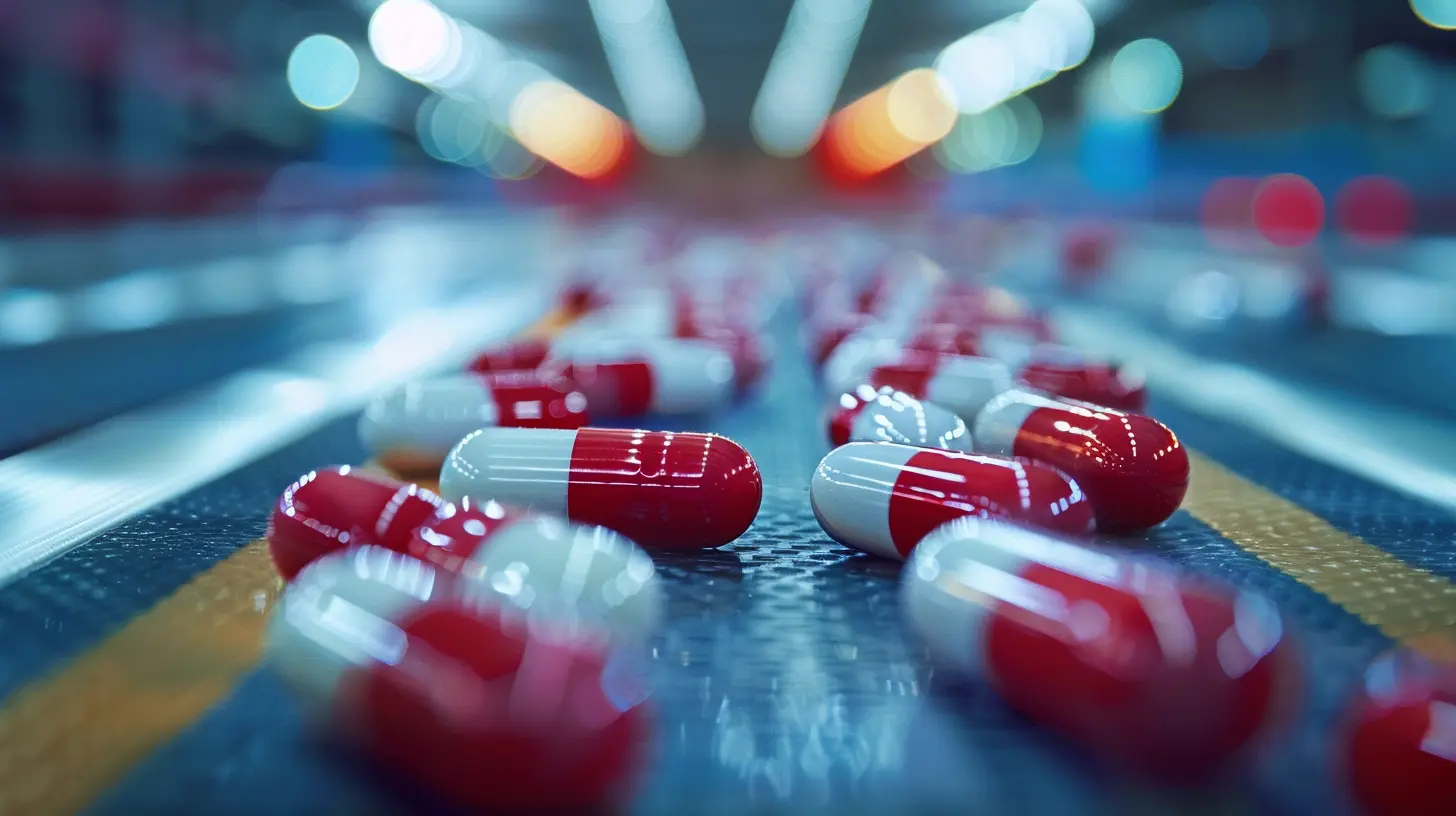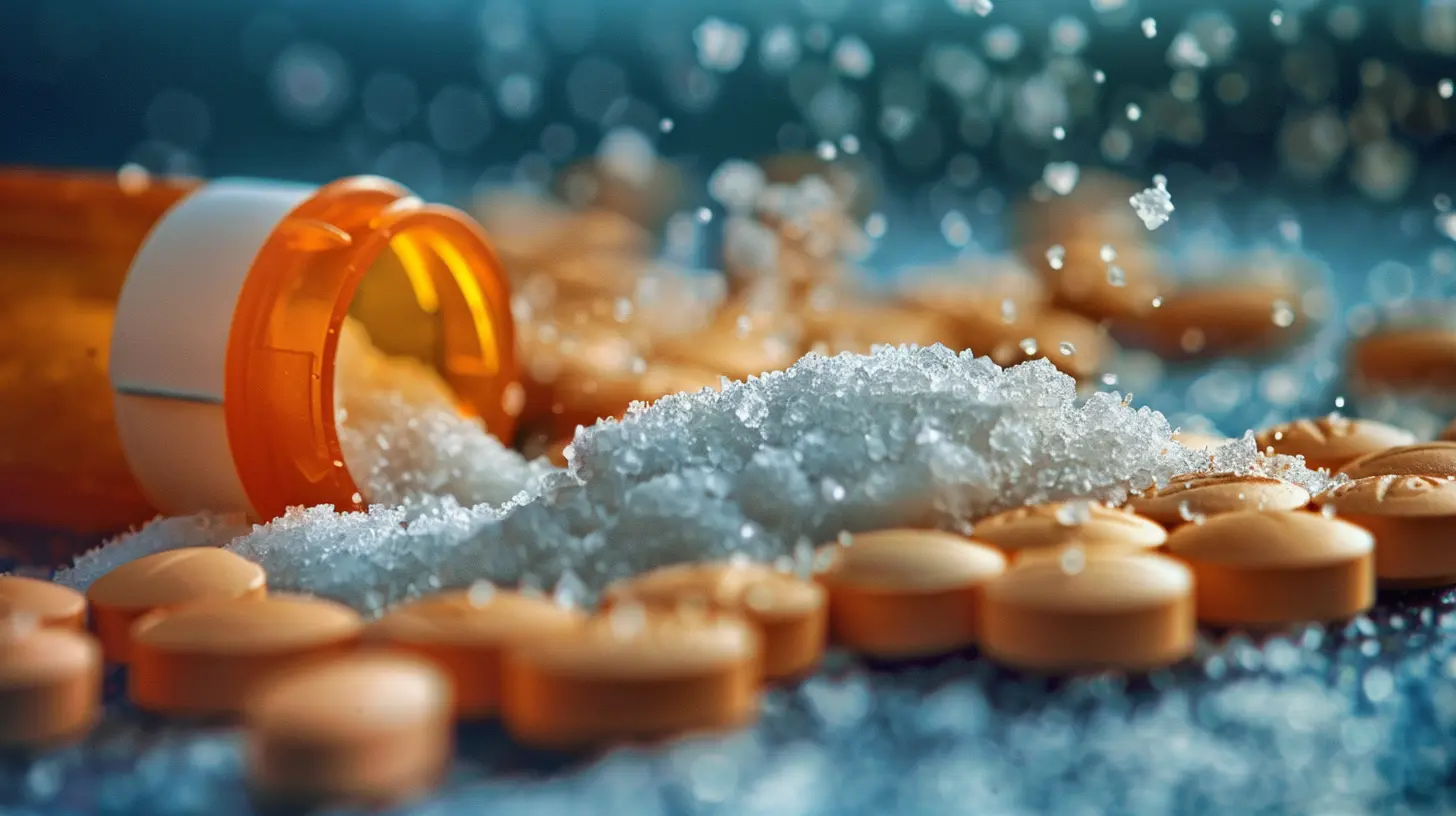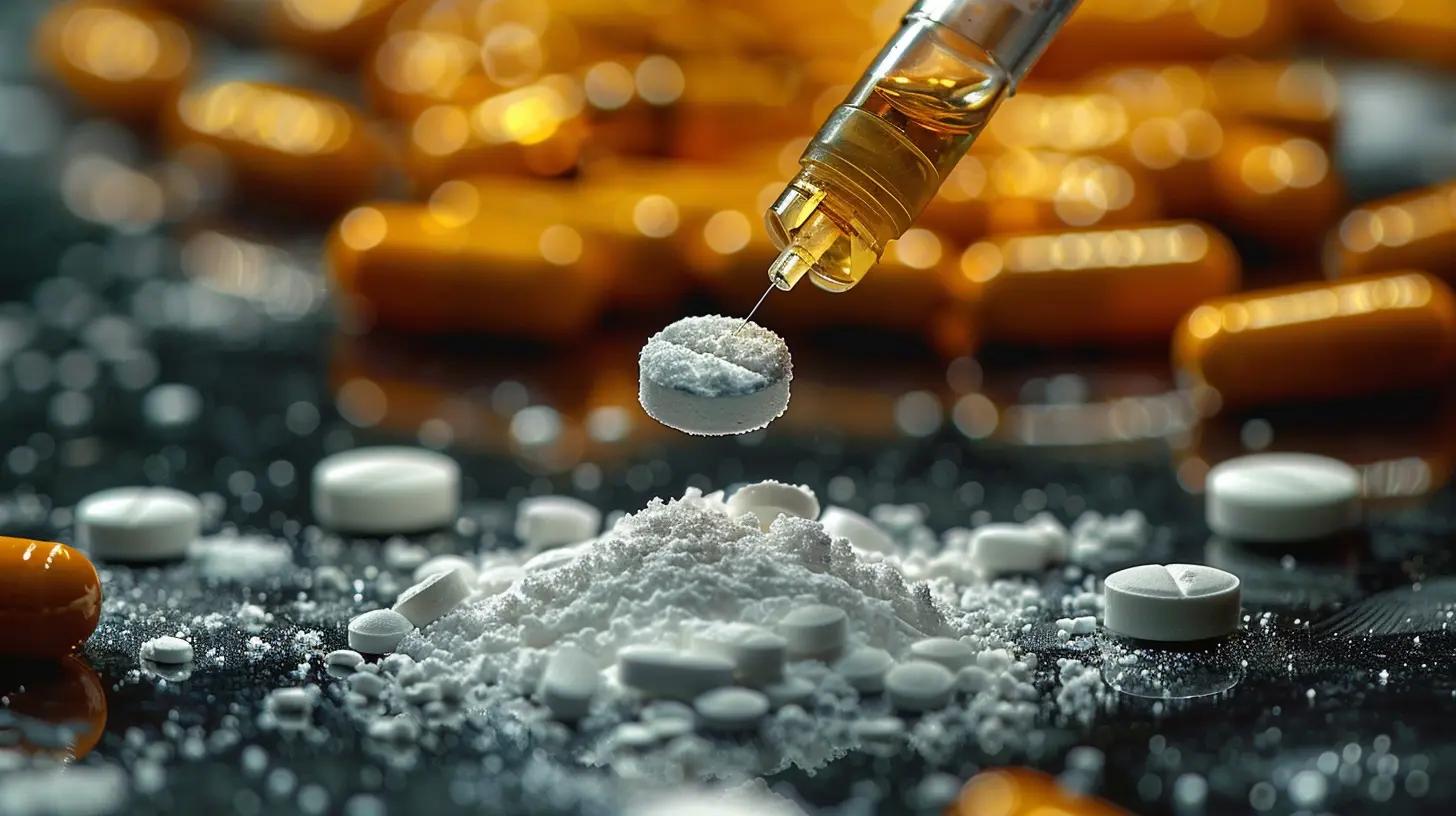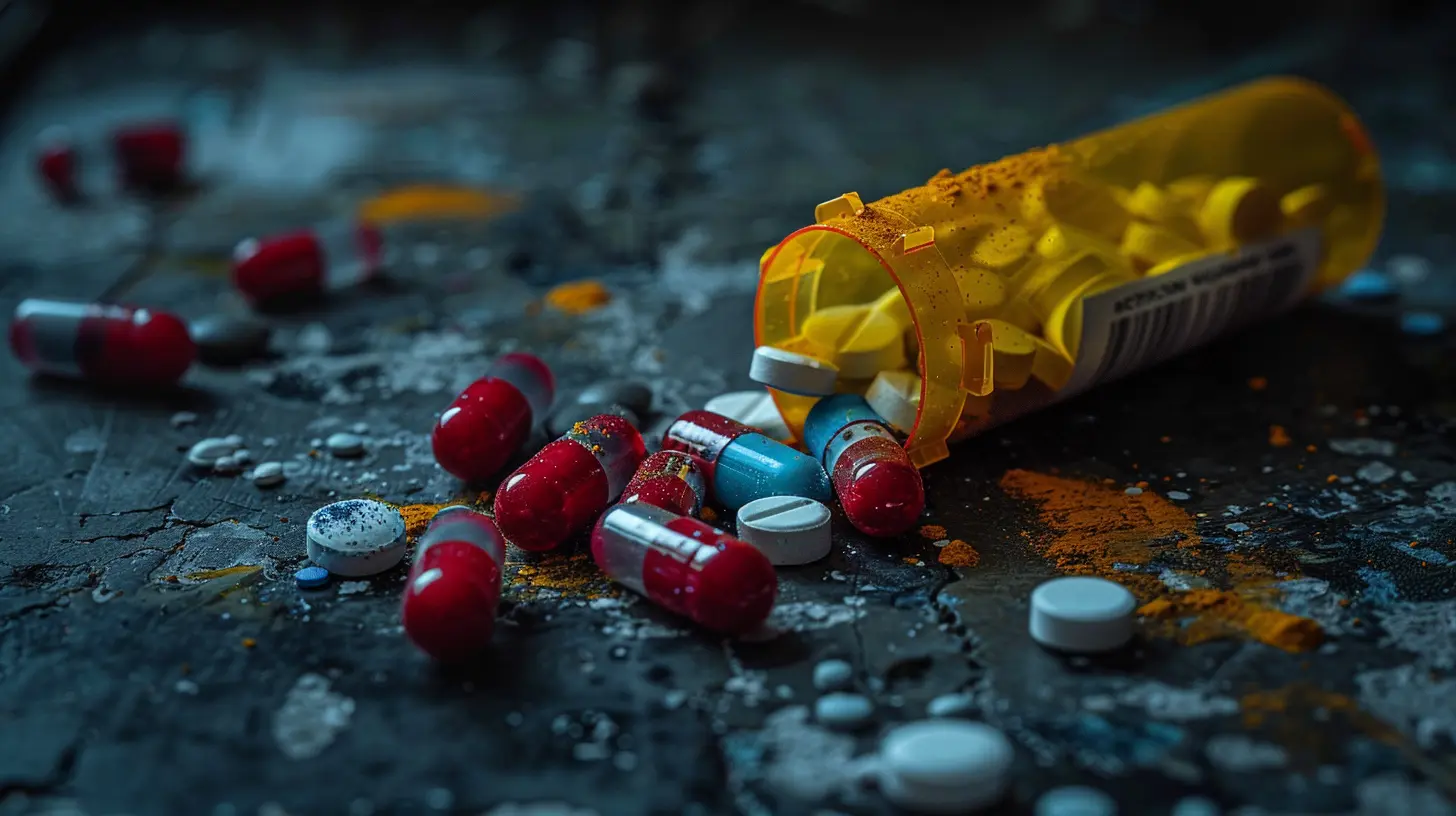Drug Testing Drama: How Performance Enhancers Shaped Sports History
15 August 2025
Ah, sports—the arena where adrenaline meets ambition, where blood, sweat, and tears are worn like medals, and where legacies are built in the blink of an eye. But behind the podium smiles and record-breaking roars, there's a shadowy subplot that clings to the fabric of athletic history like static on a jersey.
Performance-enhancing drugs (PEDs), those clandestine companions of champions and cheaters alike, have carved a controversial trail across the sports landscape. With drug testing evolving into high-stakes drama, it's not just about muscle and medals anymore—it's about ethics, science, and a relentless pursuit of truth.
So buckle up, sports fans. You’re about to step into the murky waters of athletic greatness, tainted reputations, and a relentless game of cat and mouse: the drug testing drama.
The Early Days: Where It All Began
Picture this: It's the early 20th century. Athletes are gunning for glory, relying on raw talent, rigorous training, and maybe a glass of raw eggs for good measure. But even back then, whispers of “boosters” were crawling through locker rooms.The 1904 Olympics saw marathoner Thomas Hicks win gold... but not without a bit of strychnine (yes, the poison) and brandy mid-race. Wild, right? The lines were blurry. What counted as an unfair advantage? Where did natural effort end and artificial enhancement begin?
Back then, no one had a clue about systematic drug testing. It was the Wild West of sports—anything went, and honor was as subjective as the judges' calls.
The Rise of Testing: From Trust to Tactics
By the 1960s, the stakes had skyrocketed. Cold War rivalries spilled onto the playing fields, and athletes were no longer just competitors—they were national symbols. Win at all costs became more than a mantra; it was policy.Cue the 1960 Rome Olympics, where Danish cyclist Knud Enemark Jensen collapsed and died. His autopsy revealed the use of stimulants, and suddenly, the world woke up to the dark side of performance enhancement.
The moment triggered a global realization: testing wasn't just a good idea—it was a necessity.
By 1968, the International Olympic Committee (IOC) officially began drug testing. The cat was out of the bag.
Anabolic Arms Race: The Steroid Struggle
Let’s talk about the ‘roids—anabolic steroids, the muscle-makers, the legends and legacies polluters.The 1970s and 80s were a chemical Cold War. Athletes, trainers, and entire nations were figuring out how to push past human limits without getting caught.
East Germany, in particular, became infamous for its state-sponsored doping program. Young athletes were given performance-enhancing cocktails, often without informed consent. The results? Medals galore. But the cost? Health problems, broken lives, and a generation marked by bio-manipulation.
Meanwhile, on the other side of the globe, baseball, football, and bodybuilding saw steroid use become almost part of the training regimen. Champions were being made, but not necessarily through sheer will.
The 1988 Olympics: Ben Johnson’s Fall From Grace
If you had to pick one moment when the world gasped in collective disbelief, it was probably Seoul, 1988.Canadian sprinter Ben Johnson blew everyone away in the 100-meter dash, crossing the finish line in a jaw-dropping 9.79 seconds. Triumph turned to turmoil in less than 72 hours. He tested positive for stanozolol, a banned anabolic steroid.
The gold was stripped. Johnson went from hero to headline in record time. It was a massive wake-up call. If the fastest man in the world was juicing, who else was?
This moment forever fused the concepts of elite performance and drug suspicion in the public mind. The drama was just heating up.
Baseball’s Balco Bombshell
Fast forward to the early 2000s. America’s pastime—baseball—was in the crosshairs.Enter BALCO (Bay Area Laboratory Co-operative), the lab that became the center of a drug scandal that rocked Major League Baseball (MLB) to its cleats. Some of the sport’s brightest stars—Barry Bonds, Jason Giambi, Marion Jones (track)—were implicated.
The drug in question? THG (tetrahydrogestrinone), a designer steroid so well-crafted it initially evaded testing protocols. The BALCO scandal wasn't just about drugs—it spotlighted the growing sophistication of both dopers and testers.
And so began a dance—a biochemical chess match between those who test and those who cheat.
Lance Armstrong: From Tour de Force to Tour de Farce
Let’s not skip over the crown jewel of athletic deception.Lance Armstrong wasn’t just a cyclist. He was a tale of human triumph over cancer, a seven-time Tour de France winner, and a global symbol of perseverance.
And then? Boom. The truth unraveled like a bad gear shift.
USADA (United States Anti-Doping Agency) released a 1,000-page report detailing sophisticated doping, including blood transfusions and EPO use.
Armstrong lost his titles, his reputation, and the trust of millions. His fall made one thing clear: No one is too big to be caught.
The Science Behind the Syringe
Let’s get nerdy for a second.What exactly are these substances that start all this drama?
- Anabolic steroids: Muscle builders. They mimic testosterone, helping athletes bulk up fast.
- Erythropoietin (EPO): Increases red blood cell count, boosting endurance—think of it like upgrading your body’s oxygen tank.
- Human Growth Hormone (HGH): Speeds up recovery and tissue growth. Ideal for injury-prone athletes.
- Stimulants: Provide temporary boosts in alertness and energy.
These aren’t your mom’s vitamins. They’re powerful, risky, and often leave irreversible damage—not just physically but morally too.
Testing Gets Smarter: The Biological Passport
Responding to the improvement of doping methods, anti-doping agencies got smarter.Enter the biological passport—a revolutionary shift in how we detect cheaters.
Instead of testing for specific drugs, it monitors an athlete’s biomarkers over time. Think of it like keeping an eye on your favorite player’s “normal,” and flagging any suspicious spikes or dips. Sneaky, right?
This method has helped clean up many sports. It makes it way harder for athletes to get away with micro-dosing or spacing out their "boosts."
But even this isn’t foolproof. The arms race continues.
The Ethics Debate: Where Do We Draw the Line?
Let’s hit pause for a second. Not everyone agrees on what counts as cheating.Sure, steroids seem obviously wrong. But what about altitude tents, hyperbaric chambers, or even caffeine?
Some argue that if everyone has access to the same enhancement, maybe it levels the playing field. Others say that allowing any artificial boost corrupts the purity of competition.
Where’s the line? What’s fair? What’s just science doing what science does?
These are questions we still wrestle with. And honestly? There might never be a perfect answer.
Redemption and Regulation: The Way Forward
It’s not all doom and gloom. Sports bodies have gotten better at catching cheaters and cleaning up the game.Organizations like WADA (World Anti-Doping Agency) and USADA are now global watchdogs, equipped with cutting-edge labs and relentless determination.
Athletes, too, are speaking up more. Whistleblowers like Grigory Rodchenkov, the Russian scientist turned informant, have risked everything to bring the truth to light.
More importantly, fans are smarter now. We ask questions. We demand transparency. And that pressure keeps the system moving forward—however slowly.
Why This Still Matters Today
So why should you care about PEDs? Because every time someone cheats and wins, someone else loses unfairly.It’s the clean athlete missing a medal. It’s the kid idolizing a fraud. It’s the integrity of sport being chipped away like paint off an old stadium wall.
But as long as there are rules, there will be rule-breakers. It’s not about eliminating doping entirely (though wouldn’t that be nice?). It’s about staying vigilant, asking the hard questions, and keeping sports as honest as possible.
Because in the end, the real drama isn’t in scandal—it’s in striving, struggling, and rising the right way.
Final Whistle: A Game That Never Ends
Performance-enhancing drugs have forever altered the fabric of sports history. It’s a tale of ambition, deception, and redemption. From Ben Johnson's disgrace to Armstrong’s fall and the endless chase between dopers and testers, the story continues to unfold.The drug testing drama isn’t just about science or scandal—it’s about what we value in sport. Grit over gimmicks. Sweat over shortcuts. Character over chemistry.
So next time you see an athlete break a record or collapse in exhausted victory, ask yourself: was it all them? Or was there something... extra?
One thing's for sure—the drama’s far from over.
all images in this post were generated using AI tools
Category:
Sports ScandalsAuthor:

Umberto Flores
Discussion
rate this article
1 comments
Zina McMahan
Great insights on a complex issue! Understanding the impact of performance enhancers helps us appreciate the integrity of sports. Keep up the fantastic work, and looking forward to more thought-provoking articles!
September 28, 2025 at 2:21 AM

Umberto Flores
Thank you for your thoughtful comment! I'm glad you found the insights valuable. Stay tuned for more articles!

